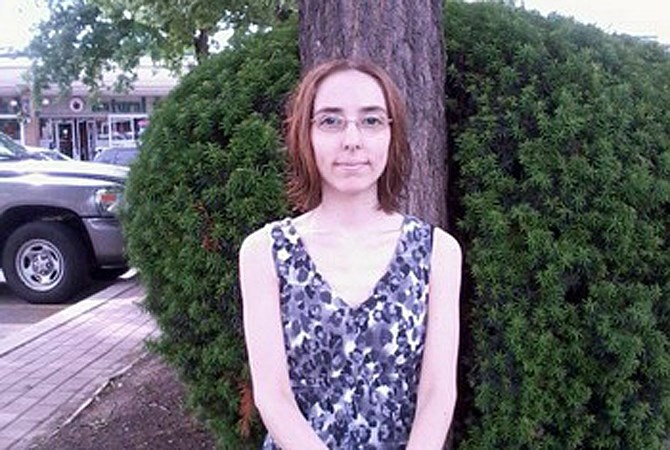
Theresa Ashley Neville, 27, was murdered in her Yates Road home in Glenmore, with her two daughters present, on June 18, 2013.
Image Credit: Contributed
January 14, 2019 - 10:11 AM
KELOWNA - Jay Sinclaire Thomson stabbed his common-law partner Theresa Neville "at least 35 times" in 2013, court heard today after a surprising guilty plea on the morning of trial.
Thomson pleaded guilty to second degree murder in the opening moments today, Jan. 14, of what was to be a six-week trial without a jury. It was referred to several times as a last minute change in plea.
Prosecutor Mark Levitz said Neville was stabbed "at least 35 times" — perhaps many more — and the crime indicated she was "killed in anger." She weighed just 88 pounds at the time of her death.
The murder was committed under strange circumstances, as described by prosecutor Mark Levitz. He said Thomson, born in 1956 and Neville, 27, had been in a relationship since she was 15 — while he was married with four children of his own.
Levitz was forced to rely on various statements the accused made to police and family over the years to try to piece together the context of their relationship and what led to the murder. It should be noted that it appears he has changed his story many times over the 5.5 years since her death.
He has said he met Neville online and also that he met her on a beach in Kelowna, where he found her crying. He gave her his name and number and invited her to call him if she needed anything. She soon did and the two began "hanging out" with each other. Neville's sister told police she caught them in a hot tub together when Theresa was 15. Thomson claimed they never began a sexual relationship until she was 16.
He left his wife in 2012 and moved in with Neville. She bore him two children who were both home at the time of the murder.
There was little information revealed by the Crown about a motive, except, again, what he may have told police and family. His statements suggested he was jealous and controlling. Letters found in the home from Neville to Thomson suggest he was controlling her email accounts and suspected her of having an affair.
Levitz said Thomson began planning his alibi almost immediately. He called 911 2.5 hours after the murder and told police that she told him to get a box of donuts sometime before midnight Feb. 12, 2013. Indeed, after he cleaned himself up following the bloody murder, he went to Tim Horton's, bought donuts and kept the receipt.
He told police several times that when he returned he saw an "Indian, a "native male" or a "big Indian" fleeing the home when he arrived, even later helping police produce a sketch from his imagination. Levitz said police wasted plenty of time chasing down the lead. He didn't indicate if anyone was arrested or questioned because of the false information.
After the murder, Thomson continued to tell lies about Neville as he variously discussed their relationship with several people including his former wife. He called her a "pill popper" and suggested she was perhaps killed by whoever sold her pills. It was all lies: She had prescription medication she took properly and no drugs showed up on the toxicology post mortem.
Thomson made no comment and looked at no one as he entered the prisoner's box, dressed in black. He was taken into custody following the plea and explanation from the Crown. He will sentenced Jan. 24 to allow family members time to prepare Victim Impact Statements.
He faces a mandatory minimum life imprisonment with no parole eligibility for 10 years.
To contact a reporter for this story, email Marshall Jones or call 250-718-2724 or email the editor. You can also submit photos, videos or news tips to the newsroom and be entered to win a monthly prize draw.
We welcome your comments and opinions on our stories but play nice. We won't censor or delete comments unless they contain off-topic statements or links, unnecessary vulgarity, false facts, spam or obviously fake profiles. If you have any concerns about what you see in comments, email the editor in the link above.
News from © iNFOnews, 2019